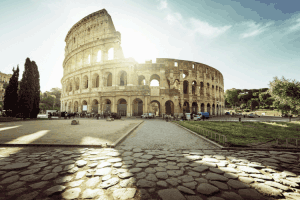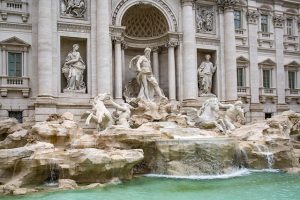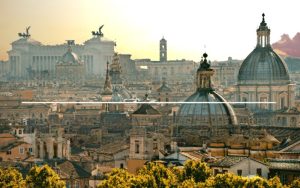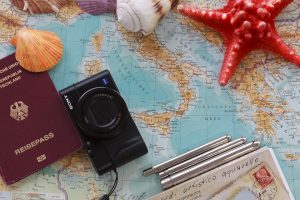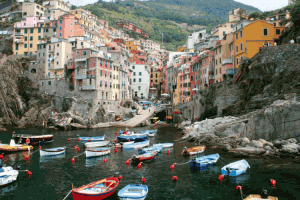Think of Naples in Italy, and you will immediately start thinking about pizza. No wonder, Naples is the birthplace of the traditional wood-burning oven. As you travel across Naples, you realize that Naples is more than pristine beaches, emerald, green fairways, relaxing resort spas, and pizzas.
It is the third-largest city and the second most populous area in Italy. The port of Naples, a major cargo terminal, is one of the busiest in the Mediterranean area. But, in Naples, tourism is one area that is developing and influencing the city’s economy.
When you set off to travel through Italy, make sure you keep aside at least a few days to explore Naples. You can regard the tour of Naples alone as a good utilization of your Italy visa. Naples has been a center of art and architecture for the past few centuries and continues to be one even now.
As you travel and explore you will realize that this is an Italian city that lives art.
Is Naples Worth Visiting?
Absolutely! While Naples often gets overlooked by tourists hitting bigger Italian cities, spending time here offers a more authentic slice of local flavor, culture and history that deserves exploration.
As the birthplace of pizza, Naples takes its food very seriously with humble, freshly made flavors that permeate its sea of family-run trattorias, cafes and tempting bakeries – the perfect fuel for getting lost in its cinematic streets oozing with character around every turn.
The city also holds artistic and architectural treasures from its past as a Greek colony and Roman outpost through phases as a prestigious European capital and merchant port. Historic churches, castles and aristocratic palaces abound with a few housings world-class art collections.
And Naples’ dramatic location in the shadow of Mt. Vesuvius volcano provides no shortage of dazzling vistas across its bay out towards Capri and Sorrento adding to the visual allure. Beyond city limits, important nearby sites like Pompeii and the entrancing Amalfi Coast beckon as well.
While grittier edges exist, renewed civic pride has reclaimed public spaces and infused cultural energy in recent years. Visitors willing to look beyond surface perceptions will discover an authentic Italian spirit and captivating city not found elsewhere in the country.
How to Reach & Get Around Naples
By air: Naples International Airport serves the city and connects to major hubs across Europe and the world. The airport is about 6 km from the city center. Buses, trains, taxis and rental cars provide transport into central Naples.
By train: Naples is a major stop on Italy’s rail network. High-speed Frecciarossa trains connect Naples to cities like Rome, Florence, Bologna and Milan. Regional trains also link to destinations across southern Italy. The Napoli Centrale station is centrally located.
Public transport: Naples has an extensive public bus system as well as a metro and commuter rail network. The Unico Napoli pass offers unlimited rides on metro, bus and funicular options. Taxis are also readily available.
On foot: Naples’ historic core is compact and walkable. Locals rely heavily on walking and public transport to navigate the city’s narrow lanes and alleys. Just be watchful of crazy drivers!
What is Naples Famous For?
Naples is most famously the birthplace of pizza, which rose in popularity here as an affordable and tasty meal for the city’s working class in the 18th and 19th centuries. Neapolitan-style pizza features a thin and soft wood-fired crust topped with simple fresh ingredients like tomato sauce, mozzarella cheese and basil – now globalized as the classic Margherita pizza named after an Italian Queen.
Beyond its gastronomic inventions, Naples is also renowned for its ancient history as a Greek settlement later conquered by the Romans. Ruins across the city showcase this layered past, like the Greek walls of its historic center to ancient mosaics and theaters discovered underground throughout its metro system.
As the capital of the Kingdom of Naples, the city also grew into an important political and cultural hub during the Renaissance and Baroque eras. Palaces, castles and churches were erected across Naples and filled with artistic treasures. This rich architectural and artistic heritage remains abundantly evident in the city’s handsome historic fabric today.
Geographically, Naples’ location along stunning Bay of Naples backed by the still-active Mount Vesuvius volcano provides its iconic dramatic seaside landscape. These natural attributes fostered the development of glamorous resort towns like Sorrento and Capri that continue to draw visitors.
While outsiders often portray Naples as chaotic and sketchy, locals take great pride in what they consider the true heartbeat of Italy steeped in beloved culture, buoyant spirit, timeless traditions and warmth its famously lively people.
7 Things To Do In Naples
Naples offers an exciting mix of art, history, culture and natural beauty. Here are the top 7 things you must experience when visiting this artistic Italian city:
1. Explore Pompeii and Mount Vesuvius
Take a day trip to the UNESCO World Heritage archaeological site of Pompeii, nestled at the foothills of Mount Vesuvius. Marvel at the well-preserved ruins of this ancient Roman city and gain insight into everyday life during that period.
2. Appreciate Art at the Naples National Archaeological Museum
With one of the world’s finest collections of Greco-Roman artifacts, this museum allows you to discover intricate mosaics, mummified remains from Pompeii and ancient erotic art.
3. Sample Authentic Neapolitan Pizza
Bite into a chewy, thin-crust pizza baked in a wood-fired oven to experience the original taste of Naples’ most iconic dish. The classic Margherita pizza is a must-try.
4. Wander the Historic City Center
Lose yourself in the vibrant Spaccanapoli district and uncover architectural gems and cultural treasures as you stroll down narrow cobbled lanes lined with laundry-laden balconies.
5. Take a Day Trip to the Amalfi Coast
Journey along the famed Amalfi coastal drive for postcard-perfect views of pastel-hued villages nestled between soaring cliffs and the azure Mediterranean sea. Positano and Ravello are highlights.
6. Explore Naples Underground
Descend into the fascinating tunnels beneath the city to discover an underground world of ancient aqueducts, wartime bomb shelters and more. It’s an eye-opening perspective of Naples literally below street level.
7. People Watch at a Local Cafe
Grab a caffè at one of Naples’ traditional cafes and immerse yourself in local culture as you watch a cross-section of Neapolitan society go about their day against the backdrop of lively street theater.
Do not miss getting glimpses of the following art work while in Italy:
1. Piazza Del Plebiscito:
Generally sightseeing begins here, the city’s central gathering place in the heart of Naples. It is also a short distance from some of the important tourist attractions. The Piazza del Plebiscito is a beautiful pedestrian square from where you can get glimpses of Basilica Royal and the Royal Palace. The Gran Caffe Gambrinus here is famous for works of art by contemporary Italian artists.
2. Naples’ National Archaeological Museum:
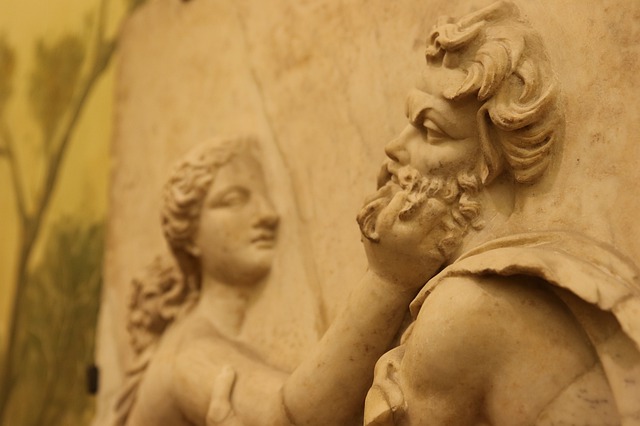
A visit to this museum that has a vast collection of ancient Roman and Greek artifacts is a must. Most of these artifacts are from the nearby Pompeii and Herculaneum. You will also find works from Greek, Roman, and Renaissance times in the collection here. The greater part of the museum’s classical sculpture collection largely comes from the Farnese Marbles that are Roman copies of original classical Greek sculptures, most of which are lost.
3. Madre Museum:
For lovers of contemporary art, Naples is one of the best cities to indulge in themselves. The Madre Museum ranks as the top museum in Italy for contemporary art. It is situated very near the National Archeological Museum. You can view works by some great artists, like Sol Lewitt, Richard Serra, Mimmo Paladino, and Jeff Koons.
4. Museo di Capodimonte:
This is one of the largest museums in Italy, located in the Royal Palace of Capodimonte. The National Gallery here includes works of Caravaggio, Raphael, Titian, El Greco, Giovanni Bellini, and many others. Enjoy the magnificent Farnese collection of classical, mostly Roman, monumental sculptures exhibited on the ground floor.
5. San Gennaro Catacombs:
The San Gennaro Catacombs are in the city of Naples, beneath the city. They are home to over 3000 burial sites. With two levels carved out of porous stone, the upper level is for the bishops and the lower level for the less wealthy members of society. Admire some of the oldest Christian art in all of Italy here.
6. Ruins of Pompeii & Herculaneum:
Visit the nearby ruins of Pompeii, a UNESCO World Heritage site. Explore the well preserved and large theatre, and admire the acoustics of this ancient theatre. See the preserved remains of the people of Pompeii trying to escape. Covered and frozen in various poses, you can feel their terror. The excavated city offers a picture of Roman life at the moment of eruption. Herculaneum is another town that was stamped out by the volcanic ash of Mount Vesuvius’ eruption. View the collection of preserved papyrus scrolls at the Villa of Papyri.
7. Street Art

In Naples, art is not restricted to galleries and museums. As you walk through the city, you find that the city itself is a canvas for the artists with murals, stencil-work, and graffiti art that can be seen throughout the urban landscape. Go on a street-art tour and enjoy the best works by local and international artists.
8. Mount Vesuvius
Climb the most dangerous volcano in Europe. There is a spiral walkway around the volcano from the road to the crater. Take a tour to the top with a guide and learn about its history and many eruptions. Look into the silent crater. Enjoy the view from the top of Naples, the bay, and the Apennine mountains. The area around Mount Vesuvius is a National Park.
As a vibrant city, Naples is tougher than other Italian cities. To enjoy your visit, a guided tour is recommended. Take care of your belongings and avoid crowds.
There are plenty of other attractions in Naples. Wherever you turn, you find art – in their cafes, roadsides, walls, and even in their food. Strolling along the street markets and bargain hunting turn out to be a multisensory adventure. The flavors of Naples, even apart from their heavenly pizzerias, are to be experienced to be believed.
